Babes in the Wood murders: after the police blunders and killer's deceit, how justice caught up with Russell Bishop, 32 years on
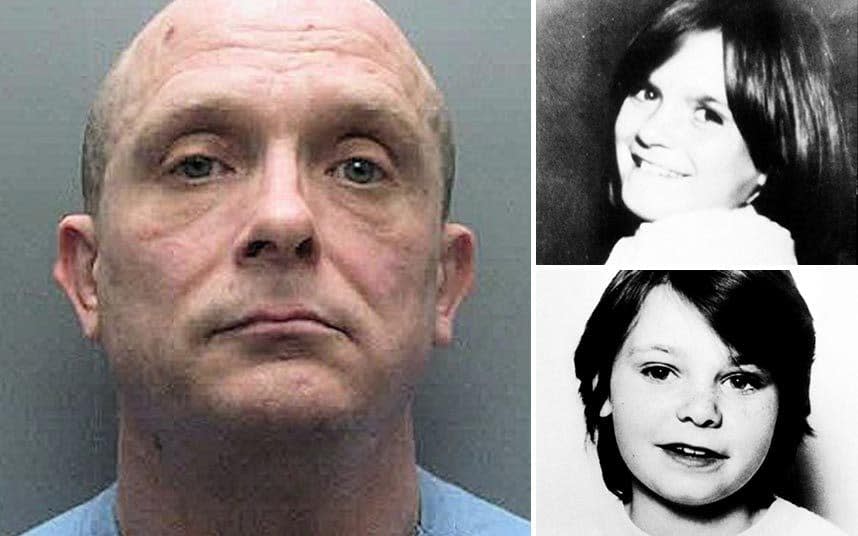
Paedophile Russell Bishop has been found guilty of the Babes in the Wood murders more than 30 years after a bungled police and forensic operation saw him walk free from court.
The 52 year-old was finally convicted of the sexually motivated murders of nine-year-olds Karen Hadaway and Nicola Fellows, who were strangled to death in October 1986.
The families of the two girls cheered members of the jury as the verdict was handed down at the Old Bailey on the anniversary of his original acquittal.
Bishop was not in court having refused to leave his cell and attend. He will be sentenced on Tuesday.
Bishop was initially charged with shocking crimes in 1987, but was cleared by a jury at Lewes Crown Court after a catalogue of forensic mistakes torpedoed the prosecution case.
Tragically, three years later, when Bishop should have been languishing in prison, he struck again, attacking a seven-year-old in almost identical circumstances.
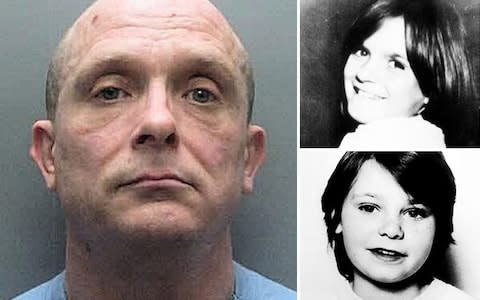
After grabbing the youngster off the street, Bishop bundled her into his car, took her to a secluded spot where he sexually assaulted her before strangling her and dumping her naked in some woods.
But she survived and was able to identify Bishop who was subsequently jailed for life.
The parents of both girls held hands with other relatives in the well of the court before the jury came back in, and wept as the verdicts were read out.
Following the verdict, Karen's mother Michelle Hadaway said Bishop was an "evil monster".
She said: "After 32 years of fighting, we finally have justice for Karen and Nicola.
"Time stood still for us in 1986. To us, them beautiful girls will always be nine years old. They will never grow up.
"What people like Bishop inflict on the families of their victims is a living death."

The Fellows family said: "The guilty verdict doesn't bring Nicola and Karen back, but we know that other children are now safe from the hands of Russell Bishop.
"He is a monster. A predatory paedophile. Russell Bishop truly is evil personified."
Despite his earlier acquittal, Sussex Police never gave up hope of one day getting justice for Karen and Nicola.
A change in the double jeopardy laws in 2003, which allowed suspects to be tried for the same crime twice, and advances in DNA and forensic technology, meant Bishop was finally put back in the dock for his crimes.
Eurofins, the same forensics team which helped bring the killers of Stephen Lawrence to justice, took another look at the case in 2011 and recovered a billion-to-one DNA match linking Bishop to a discarded sweatshirt close to the murder scene.
A taping taken from Karen Hadaway's left forearm was also found to contain Bishop's DNA.
A jury of seven men and five women found him guilty of the murders of the two schoolgirls.
Prosecutor Brian Altman told them they were "putting right the 32-year-old injustice" which let him walk free after the original trial.
The guilty verdict means he will now die in prison for the crimes he thought he had got away with.
The cowardly paedophile has never admitted his twisted sexual desires and stormed out of the witness box when he was questioned about his interest in children.
The victims
Despite going to different schools, Nicola Fellows and Karen Hadaway, were best friends who lived close to one another Moulsecoomb estate in Brighton.
At around 3.30pm on 9 October 1986, the pair returned home from school before going out to play.
There were various sightings of the girls around the estate with one teenage neighbour saying he had seen them near the local Wild Park, where they were not allowed to go.
When they failed to return home by bedtime their panicking families began to scour the streets with the support of local volunteers.
Despite a widespread search of the area there was no sign of the pair and their parents began to fear the worst.

On the afternoon of Friday October 10, hospital porter Kevin Rowland and his friend Matthew Marchant, who had joined in the search, made the grim discovery of the girls' bodies hidden in a makeshift den in Wild Park.
They had been sexually assaulted and strangled.
The suspect
Russell Bishop, a petty local criminal, who was known to the girls and their families, fell under suspicion in the early stages of the investigation because of his close involvement in the search.
Bishop had turned up with his terrier dog Misty, which he claimed was a highly trained tracker animal.
He was also carrying a coat belonging to Karen, which he had got from her family so that Misty could pick up the scent.
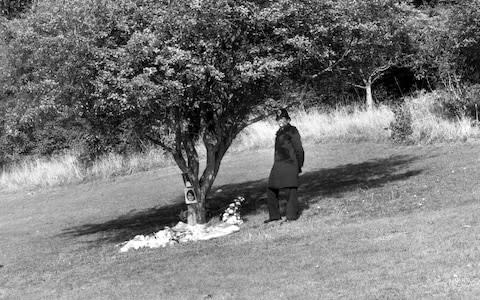
When the bodies of the girls were found, Bishop was close by and ran towards the scene with a police officer.
But crucially the constable recalled that Bishop did not get close enough to touch the girls or even see them properly.
Bishop's police statements contained a series of discrepancies and inconsistencies on October 31, three weeks after girls were found dead he was arrested on suspicion of murder.
He vehemently denied involvement, but was charged on 3 December 1986 and went on trial at Lewes Crown Court a year later.
The blunders
Despite forensic evidence linking Bishop to the crime, a series of blunders in the prosecution case meant he was acquitted by the jury after just two hours of deliberations.
One of the key mistakes made by the pathologist and forensic team in the original investigation was the failure to record the temperatures of the bodies and therefore accurately state a time of death for the two girls.
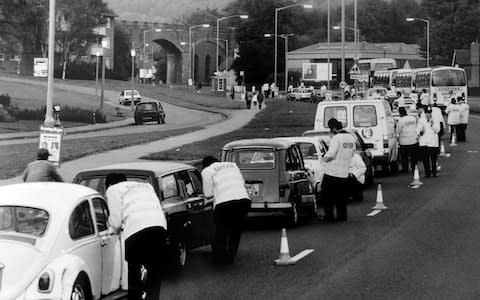
At his trial the prosecution suggested to the jury that the girls had been killed between 6.15pm and 6.30pm.
But without any scientific evidence to back up that claim the prosecution were unable to substantially challenge Bishop's various alibis for the night of the murders.
While the girls had been strangled to death, nobody had measured the hand marks around their necks or had attempted to take fingerprints left by the strangler.
Forensic scientists also failed to analyse blood discovered on Karen's underwear.
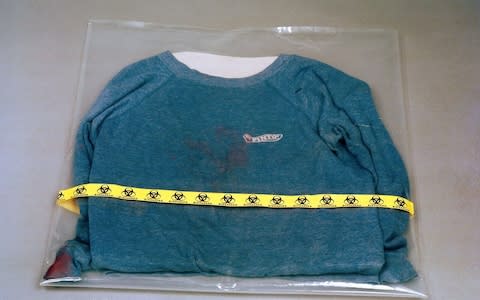
A key plank of the prosecution's case rested on the recovery of a blue Pinto branded sweatshirt.
The top had been found close to the railway line Moulsecoomb Station.
The police believed Bishop had discarded the top after attacking and killing the girls and were confident that it would hold a cache of forensic clues.
But the failure of the police to preserve the evidence to avoid contamination meant Bishop's defence team were able to cast doubt on the reliability of the material.
Under questioning Bishop denied that the sweatshirt belonged to him, but his common-law wife, Jenny Johnson, contradicted his story telling police it was his.
The prosecution hoped this would undermine Bishop's credibility and portray him as a liar, who was trying to distance himself from a crucial piece of evidence.
But when Johnson entered the witness box at Lewes Crown Court she changed her story, telling the jury she had never seen the top before.
Perjury investigation
Miss Johnson could now be investigated for perjury over allegations she lied during the original trial.
Detective Superintendent Jeff Riley of Sussex Police said they had not ruled out investigating Miss Johnson.
Nigel Pilkington, from the Crown Prosecution Service, suggested the result of the 1987 trial could have been "wholly different" if Miss Johnson had not changed her story.
He said: "We had Jennie Johnson in 1987 who said 'this is his top' but when she went into the witness box, changed her story entirely and said it was not. So our whole case was in very great difficulty.
"No-one can say if we would have won it if we had done something different or the evidence had come out differently.
"Certainly, if she had not changed her story it might have been a wholly different thing."
Mr Pilkington added: "Obviously if somebody has not told the truth in a case which has been a miscarriage of justice for 32 years, that's a serious matter, if it turns out to be so. But we will wait to see if police make a decision to investigate."
The fresh trial
Bishop was jailed for life in 1990 for an almost identical attack on another Brighton youngster, and was told he would have to serve at least 14 years before he would be eligible for release.
The 52 year-old has twice been turned down by the parole board but was considering appealing to the European Courts in a bid to secure his release.
But in May 2016 he was removed from his cell at Frankland Prison in Durham and taken to the local police station where he was once again arrested for the murders of Karen and Nicola.

His fresh trial began at the Old Bailey in October with members of Karen and Nicola's families in court to face Bishop.
Mr Altman, the prosecutor, told the jury case against Bishop was not just based on the fact that he had gone on to attempt to kill another child in similar circumstances, but on “other compelling evidence”.
He explained: “One significant part of the enquiry has been to re-evaluate various areas of scientific work that were performed for the purposes of the 1987 trial but through the lens of modern day techniques, DNA profiling which although available in 1986 and 1987 was then in its infancy.”
Faced with a raft of DNA and forensic evidence Bishop tried to change his story to fit the case.

He also cruelly suggested that Nicola's father, Barrie, was to blame, telling the jury the police had spent "32 years building a case against the wrong man".
Mr Fellows left the courtroom in tears after being accused in the witness box of having killed the girls to cover up the fact he was sexually abusing his own daughter.
Mr Altman branded it "a defence borne of desperation" and slammed Bishop and his team for "dragging that man's name through the mud".
Bishop was not in court for a few days of his nine-week trial and complained to the judge about feeling "suicidal" over his temporary stay at Belmarsh.
He told the court he wanted to go back to his more relaxed life at Frankland jail, home to some of the UK's most notorious criminals.
How Martin Bashir was accused of almost derailing the investigation
He was the journalist who went on to find international fame interviewing Diana Princess of Wales, the Stephen Lawrence suspects and Michael Jackson.
But Martin Bashir almost caused a cold case review into the Babes in the Wood murders to collapse when he was accused of losing some crucial evidence that he had been loaned by Karen Hadaway's family.
In 1991 Mr Bashir was working for a BBC Public Eye documentary series which was investigating the miscarriage of justice.
He approached the Hadaway family offering to arrange DNA tests on items of her clothing.
But he was accused of failing to return the items and when in 2004, Sussex Police decided to reexamine some of the evidence, he said he could not remember the incident.
Among the items were nine-year-old Karen's sweatshirt, t-shirt and knickers.
His manager at the time said he had no recollection of ever meeting the Hadaway family or collecting the items in question.
But a journalist who had been working with him at the time insisted that they had met the family several times and had lengthy discussions with them.
A BBC spokesman said the corporation had no comment to make on the matter.

 Yahoo Movies
Yahoo Movies 
